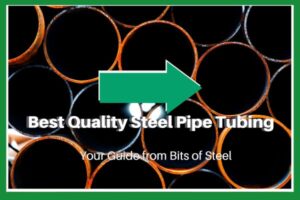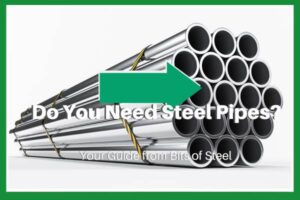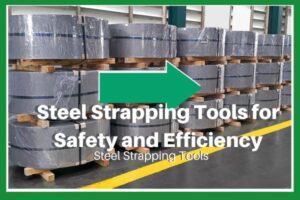The different types of floors that can be used in the construction industry for steel structures have been discussed. The discussion includes span ranges, advantages and criteria considered while specifying a given structure’s floor system; this way you know what is right for your needs!
It’s easy to get lost in the many floors that are used for the construction of steel structures. There were a few, but here we will cover some popular ones that are being used for today’s construction.
Short-Span Composite Beams and Composite Slabs with Metal Decking
To ensure that the structure is strong enough, it has shear studs fixed on its top flange. These create composite action between beam and slab which helps to prevent any cracking or settlement of either party involved in this construction process!
The steel profile is what makes the slab. It’s an elegant, durable design that can be customized for your needs with different spans and profiles available to suit any need – from 3 meters all the way up to 4.
Moreover, primary and secondary beams are designed to support the slab, while edge members can be non-composite.
The thicknesses vary depending on what they’re supporting; ranging from 0.9m for steel decks up to 1.2 mm with concrete slabs that require more strength per square inch before a failure will happen faster than expected–a problem well aware in this industry because if something doesn’t perform as expected then fixing it becomes much harder when there isn’t anything left worth saving!
The advantages of this floor system are that it’s cost-effective, lightweight and requires thinner beams than non-composite ones.
Disadvantages include needing fire protection for the columns in addition to large numbers when compared with other systems; also, there is an increased thickness because composites must be stronger at points where they meet edges or corners between rooms.
Slimdek Floor System
Slimdek floor systems are a great option for those looking to reduce the amount of material needed. They also provide an almost leveled soffit, simplifying utility installation and making it easier on workers during construction time!
Slimdek floor systems have decreased the total height of a structure. There are certain disadvantages associated with this type, such as needing special connection detailing since there’s unevenness between the top and bottom flanges widths due to it being slimmed down so much- which results in heavier steel weights for connectors at each end!
Cellular Composite Beams with Composite Slabs And Steel Decking
The construction of this bridge is an example of durability and efficiency. The cellular beams support a composite slab that consists mainly of a steel deck profile, with top concrete added onto it as well to create tensionless bonds between each layer in order to keep its shape longer than if there were no such precautions taken during the manufacturing process.
The spans range from 10 meters up to 18 meters, but most often, they’re circular because those shapes fit best throughout their thickness at high shear locations like regions close enough where supports would otherwise need supporting themselves via weak points, which could cause collapse under pressure so by omitting these open spots we ensure greater stability.
The 1200mm floor system is usually employed for spans between 15m and 4 feet. The advantage here lies in its ability to provide large clear areas without columns and use lightweight beams compared with other similar-sized projects, which also happen to be cost-effective – although not quite as cheap at first glance due to the high price point associated when installing them manually rather than using machine settings like most companies would do nowadays.
However, this particular detail does come down significantly once you factor labor costs into your budget equation, so it should definitely become something considered before jumping right out there blindly committing yourself!
Slimflor Beams with Precast Concrete Units
Slimflor is an innovative new type of floor system that has been designed to offer the features you would expect from other more expensive systems with less material and simplified construction.
The slim beam consists simply of welding 15mm thick plates together at their bottom flanges while exceeding both sides by 100 mm on either end, allowing for greater stability when compared to traditional concrete slabs or beams in order to make them easier portable items capable of being moved around without much difficulty even if they are not made entirely out composite materials.
Precast concrete slabs are a cost-effective and eco-friendly alternative to traditional construction methods. The depth of the beams is restricted only by how deep your floor needs to go, while their span can range from 4 feet up to 10 meters or more!
These floors take less time than other types, too – just one day for installation on average if there’s room left over after everything else has been set down.
And since these precasts form partway through our building process instead of bringing everything together at once like some other options might do, you get yours sooner with less waste overall.
Precast concrete slabs have many advantages, including no need for beam fire protection.
They also allow buildings to be smaller because their floor thicknesses are thinner than those made with composite materials, and they’re easier to install since most of the steelwork can wait until near installation time rather than having it all done beforehand at one central location.
On-site operations may decrease due to reduced height requirements; however, there’s still quite a lot involved in bringing these structures into existence – so much excess fabrication really.
Long-Span Composite Beams and Composite Slabs with Metal Decking
This floor system is made up of primary and secondary steel beams, composite slabs. There are two main types for the long-span horizontal members: one being supported by shorter spanning ones at 3 – 4 meters apart; these act as “secondary” supports while another set consists entirely from such short spans that they can almost be considered partakes in taking weight themselves!
Alternatively, the slab is supported by short-span secondary beams, and these sturdy frames rest on long primary members. The span of each beam ranges from 10 to 15 meters with 6 -9 inch spacing when used as a primary member or 3 – 4 inches between each supporting pair in order for it to be considered an effective design strategy during heavy windstorms where much stronger forces may want shorter spans, so they don’t cause unnecessary damage.
It can sometimes prove difficult to choose what’s best not only because there are many factors involved but also based on personal preference.
The overall thickness of a floor system is based on the span used.
For instance, 1000mm for 13 1/2 meters and 1200 in 15m spans will provide you with greater durability than your typical short-span option while still maintaining an open interior space that’s easy to work within during construction time!
The extra protection against fires can be handy too – especially if there are no fireproofing measures built into shorter buildings as we sometimes see across town at night due to their height complexity costs (which include more floors).
Composite Beams with Precast Concrete Units
The floor system is made up of hollow or solid precast concrete units placed on steel beams. The thickness varies depending upon the type, but it should be 150-160 mm for thin walls and 75 -100mm thick if they’re sturdy enough to handle weights overhead without too much problem.
Topped with reinforced pillars that connect each piece together tightly, so there are no gaps at all!
The span of both beams and precast concrete units is between 6 meters to 9 meters, which means that the entire floor thickness is around 900 millimeters.
Advantages of this system include smaller numbers needed in secondary supports compared with other beam or joist hangers because large spans can be used without any need for additional attachment points outside your building footprint as well as increased productivity due to welding offsite shear connector stores at their location, ensuring more efficient works on site.
Precast concrete units have several disadvantages. They are more costly than traditional construction methods and require detailed work to install, but they protect against lateral buckling during building activities like transport or placement, which can lead to dangerous consequences in some cases!
Steel Supplier in Australia
Bits of steel is a top-tier Australian steel supplier. If you are looking for the best prices on your steel floor system, Bits of steel might have what it takes to meet all demands! Don’t hesitate contact us now if we can help at any stage during this process or after placing an order so that our expert team members will be able provide extensive knowledge about pricing options as well as other important details like delivery schedules which may save time in future negotiations.











